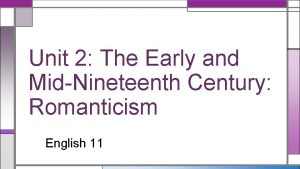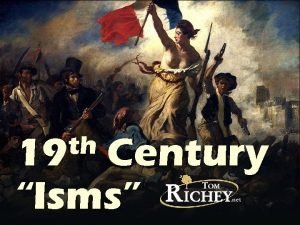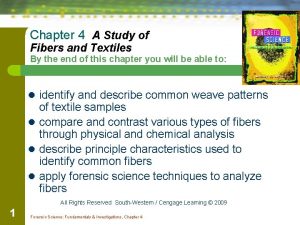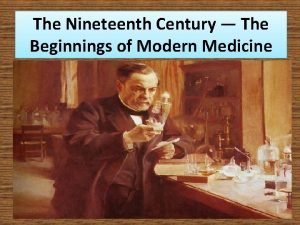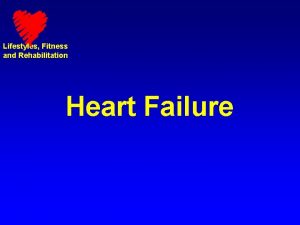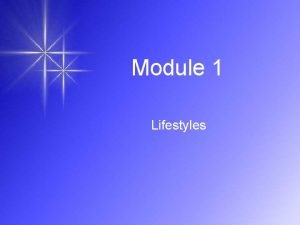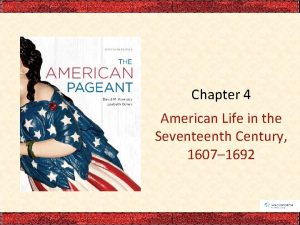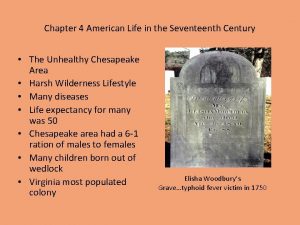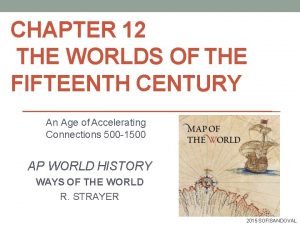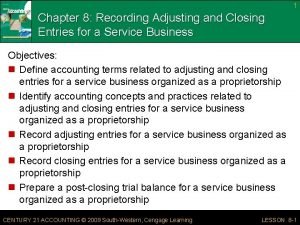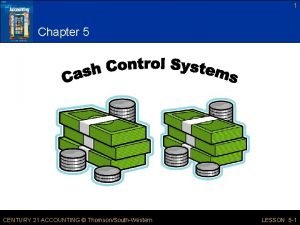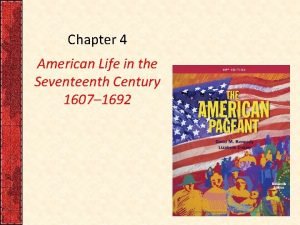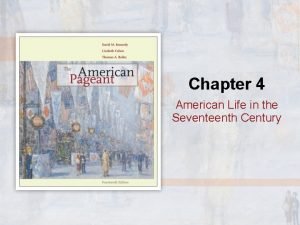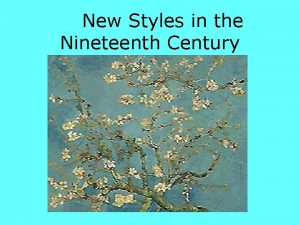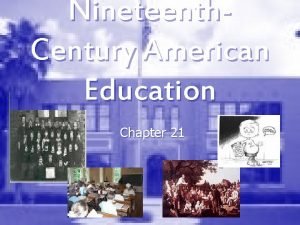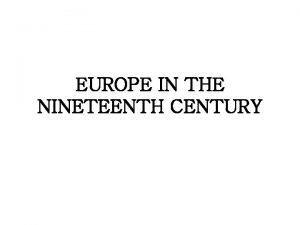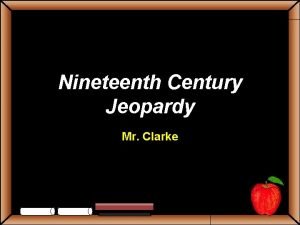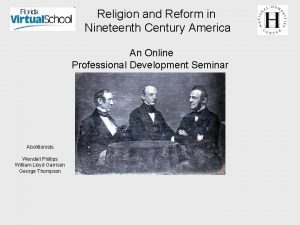Chapter 5 Lifestyles In the Nineteenth Century Introduction




















- Slides: 20

Chapter 5 Lifestyles In the Nineteenth Century

Introduction o Lifestyle includes : housing, diet, transportation, communication and entertainment. o In the 1800’s eating habits and social activities were directly related to peoples’ livelihoods o Contact between communities was limited, medical services non-existent, the church played a large role in the community.

Key words o Mansard Roof- A roof with a curved slope that pointed out at the bottom o Tilts – A structure made of logs, chinked with moss that sheltered a single trapper o Saltbox house - a square house with a peaked roof. o Square-roof Design – The roof was flat and on a slight incline.

Key Terms o Mummering – an English and Irish tradition that involved disguising yourself and visiting houses. You were expected to perform a song or play in return for a piece of cake and a drink. It was only done during the Christmas season. o Nursing Stations – the only form of medical service available to many isolated communities. o Telegraph – A system of communication that used Morse Code to transmit messages over long distances.

Family Life o The homes people lived in and where they lived reflected how they earned a living. o Fishermen in Labrador lived in tilts in the summer. o Most houses did not have the amenities today’s houses have. o In St. John’s many people lived in row housing. Only the wealthy lived in large separate houses

Housing o Many houses followed the saltbox style and the roof varied from square-roof to Mansard roofs. Many of the houses are still around today.

Food and Diet o Early settlers were self-sufficient, eating wild game, fish and berries. o Once the land was cleared they grew their own vegetables. o Some families kept hens, sheep and cows. o Staples were imported from the West Indies.

Entertainment and Recreation o Most games were invented by the children to entertain themselves. o Story telling was essential to the oral traditions of Aboriginals and Europeans. o Song, Music and Dance were important to the community. Singing, accordion playing, and step dancing were popular activities.

Entertainment and Recreation o Card playing was a pass-time for adults. o Church soup suppers, concerts and dances were held in the winter and garden parties and picnics in the summer. o Bonfire night was a community event. o Copying pans was a popular but dangerous activity.

Entertainment and Recreation o Christmas was a special celebration. Special foods were prepared and family traditions were observed. It was a time of feasting and fellowship. Families spent time together and took a well deserved break from work.

Sports o Children were expected to spend most of their day in productive work but they did play “Rounders”, a game similar to baseball. o “Piddly” or “tiddly” was a popular team sport. o Strength testing games and skill games were popular. o Many work activities and skills were formed into games.

Community Life o The church was the centre of all spiritual, social and educational activities o The Newfoundland School Society was formed to ensure that all children, including the poor, got a free education. o They established the first school in St. John’s in 1824 and by 1846 ran 44 schools. They remained in force until the middle of the 19 th century when the government took on an increasing role.

Community Life o The 1836 Education Act included resident clergy on the Boards of the 9 school districts. o By the 1850’s the largest Christian denominations ran their own schools. By the 1870’s a Denominational School System was in place

People in History o Sir Wilfred Grenfell came to NL on a Medical Ship and decided to stay here. o He convinced a large number of well-trained people to come to NL to help provide medical, economical, and social change. o He built hospitals, nursing stations and schools o He founded the Grenfell Mission to help the poor and set up cottage industries o He set up the International Grenfell Association.

Mary Southcott o Trained as a nurse in England o Returned to NL and became Superintendent of Nurses at St. John’s General Hospital. o She established the first School of Nursing. o She opened a couple of Private hospitals in St. John’s. o She promoted Child Welfare, Girl Guides, and the League of Women Voters.

Health Care o In the 1800’s Medicine was mostly home remedies. They were passed from generation to generation through mostly women. o Many Clergy and missionaries had some medical training and could administer to the sick. o In 1865 there was only 61 doctors to serve 210, 000 people.

Health Care o In the 19 th century hospitals were only for the poor and helpless. Their intention was to protect the public more so than to treat the sick. o Many people who entered hospitals ended up dying from other diseases since little was known about antiseptics, germ and microscopic organisms.

Connecting People and Community o In the 19 th century the only communication was through fishing boats, supply boats, clergy, School inspectors and the mail. o Word of mouth was most effective. o The telegraph was used throughout the Island by 1850. o The First Trans-Atlantic telegraph message came to Hearts Content in 1866

Connecting People and Community o The First Wireless signal was received at Signal Hill, St. John’s in 1901. o By the Early 20 th century, Ships and smaller towns had wireless communication. o By 1914 the telephone was in wide use in larger towns. In 1920 long distance service connected St. John’s and Carbonear

Connecting People and Community o In the Early 1800’s transportation was solely by ship. o Even in 1900, there were few roads and they were not usable during the winter. Winter travel was by dog team or snowshoe o The Trans-Island Railway made year-round travel possible. Passenger ships also traveled between St. John’s and Halifax, Port Aux Basques and North Sidney, and St. John’s and Liverpool.
 Post test the early and mid nineteenth century romanticism
Post test the early and mid nineteenth century romanticism Conservatism
Conservatism Forensic science chapter 4 fibers and textiles
Forensic science chapter 4 fibers and textiles Nineteenth century
Nineteenth century Horace taylor, the verdict, september 25, 1899
Horace taylor, the verdict, september 25, 1899 Snot is yellow
Snot is yellow Module 1 lifestyles
Module 1 lifestyles Grade 12 active healthy lifestyles
Grade 12 active healthy lifestyles Grade 11 active healthy lifestyles
Grade 11 active healthy lifestyles Grade 12 active healthy lifestyles
Grade 12 active healthy lifestyles Wild swans at coole questions
Wild swans at coole questions Chapter 4 american life in the seventeenth century
Chapter 4 american life in the seventeenth century American life in the seventeenth century
American life in the seventeenth century Chapter 12 the worlds of the fifteenth century
Chapter 12 the worlds of the fifteenth century The worlds of the fifteenth century
The worlds of the fifteenth century 8-3 work together p 219 answers
8-3 work together p 219 answers 1. 5-1 work together, p. 128
1. 5-1 work together, p. 128 Chapter 4 american life in the seventeenth century
Chapter 4 american life in the seventeenth century Chapter 4 american life in the seventeenth century
Chapter 4 american life in the seventeenth century Hát kết hợp bộ gõ cơ thể
Hát kết hợp bộ gõ cơ thể Frameset trong html5
Frameset trong html5
